
In today’s digital-first business landscape, hiring developers has become essential for maintaining a competitive edge. Recent trends in Europe and the West show a growing demand for tech roles like AI engineers, data scientists, and cloud specialists, driven by rapid technological advancements. Deloitte’s Tech Trends report highlights that skills in generative AI and data science are particularly sought after, while McKinsey’s research points to a shrinking European workforce, intensifying the need for skilled professionals. With these trends, identifying the top countries to hire software developers is crucial.
This blog will help you choose the top countries to hire dedicated developers based on relevant parameters such as skill levels, cost-effectiveness, and language proficiency. For example, India has become a preferred talent-sourcing hub, offering highly skilled developers who seek better pay, work-life balance, and career growth opportunities. By understanding these trends and factors, you can make informed decisions to bolster your tech team with top-notch talent from around the world.
How to Hire Dedicated Developers?
Choosing the best country to hire software developers involves considering several key parameters. These factors will help you make an informed decision based on cost, talent availability, and overall suitability for your project needs.
- Average Hourly Rate of Developers: Understanding the average hourly rate is crucial for budgeting. Rates vary significantly between countries, with countries like India and the Philippines offering more cost-effective options compared to Western nations.
- Talent Pool Size and Quality: The size and quality of the talent pool ensures you have access to a wide range of skilled developers. Countries like India and Poland have large, highly skilled tech workforces, making them attractive for hiring.
- Demographics and Education Levels of Developers: Evaluating the demographics and education levels of developers can give insights into their skills and expertise. Countries with strong educational systems in STEM fields, such as India and Russia, produce a steady flow of qualified developers.
- Tech Ecosystem Maturity: A mature tech ecosystem indicates a supportive environment for innovation and development. This includes access to modern tools, vibrant tech communities, and continuous learning opportunities. Poland and Romania are examples of countries with mature tech ecosystems.
- Preferred Technologies and Language Proficiency: Assessing the preferred technologies and language proficiency helps in finding developers who are well-versed in the specific technologies your project requires. For instance, Indian developers are known for their proficiency in Java, Python, and various web technologies.
- Cultural Compatibility and Time Zone Differences: Consider cultural compatibility and time zone differences to ensure smooth communication and collaboration. Countries with high English proficiency and overlapping work hours, like the Philippines, can be more convenient for Western companies.
By evaluating these parameters, you can choose the best country to hire software developers that align with your project’s requirements and budget, ensuring a successful collaboration and high-quality output.
List of Top Countries to Hire Developers
Here is a detailed overview of the top countries for hiring developers, including demographics, tech ecosystem, and other relevant data points:
1. India 
- Average Hourly Rate: $20 – $30
- Talent Pool: Over 4 million IT professionals.
- Demographics: Predominantly young professionals with a strong focus on STEM education. According to Stack Overflow, 46.85% of Indian developers hold a bachelor’s degree and 25.62% hold a master’s degree.
- Tech Ecosystem: Robust, with major tech hubs in Bangalore, Hyderabad, Mumbai and Pune. The Indian IT industry is supported by favourable government policies and strong infrastructure. In 2024, India’s tech industry is projected to generate $254 billion in revenue, reflecting a 3.8% year-on-year growth.
- Preferred Technologies: Java, JavaScript, Python, PHP, and mobile app development.
- Time Zone: GMT+5:30
As per Mint, many U.S./UK companies have successfully scaled their operations by outsourcing to India, benefiting from significant cost reductions and access to a highly skilled workforce. FP McCann Ltd., a UK-based company with operations in Northern Ireland and Softlabs Group, an AI and Software development company have been engaged for custom software development.
And here’s what the IT manager of the company has to say about Softlabs Group:
“Softlabs Group has been engaged with us for the development of Mobile iOS/Android/Windows APPs, Desktop Apps, and Touch Screen Windows APPs. Their staff have mostly been doing this work remotely but two of their resources spent some time in our offices in Northern Ireland getting project scopes & building relationships with our local team. They provided flexible services with both competent & professional staff.”
2. Ukraine 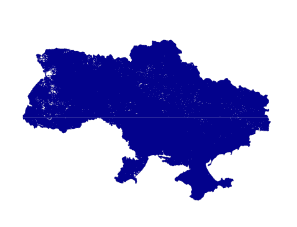
- Average Hourly Rate: $30 – $50
- Talent Pool: Over 200,000 IT professionals. The Ukrainian IT industry continues to expand, driven by a robust technical education system and a strong outsourcing market, even amidst the challenges posed by the ongoing conflict.
- Demographics: Every year on average, Ukraine produces 15,000 to 17,000 STEM graduates. The strong emphasis on technical education and the presence of numerous higher education institutions offering STEM programs contribute to these numbers.
- Tech Ecosystem: The Ukrainian tech industry has grown steadily, contributing 4.9% of the country’s GDP and generating around $7.34 billion in export revenues in 2022.
- Preferred Technologies: Java, Python, PHP, JavaScript.
- Time Zone: GMT+2.
3. Poland 
- Average Hourly Rate: $40 – $55
- Talent Pool: Approximately 279,000 IT professionals.
- Demographics: Last year, Poland saw over 34,600 students graduate from full-time engineering disciplines, and more than 8,200 graduated from part-time engineering programs. This reflects Poland’s strong emphasis on STEM education to meet the growing demand in these fields.
- Tech Ecosystem: Poland’s tech sector is robust, contributing around 8% to the national GDP. Highly mature with numerous tech hubs in cities like Warsaw and Kraków
- Preferred Technologies: Java, SQL, Python, PHP.
- Time Zone: GMT+1.
4. Philippines 
- Average Hourly Rate: $20 – $49
- Talent Pool: Around 190,000 software developers. The country’s strong emphasis on IT and BPO services has contributed to this large pool of tech talent.
- Demographics: The country produced 78,000 graduates in Information Technology and other STEM-related disciplines. This reflects the ongoing efforts to enhance the educational system in these areas, although there are still challenges, particularly in ensuring the quality of education and matching the supply with industry demand.
- Tech Ecosystem: The Philippines has a thriving tech ecosystem, contributing about 3.2% to the GDP. According to Startup Genome’s data, the country’s diligent work building and nurturing its startup ecosystem puts its value at $3.5 billion. This figure indicates an 85% growth from the past two years against a global average of 47%, placing the Philippines among the top contenders in the Asia-Pacific (APAC) region.
- Preferred Technologies: Web Development, Java, .NET.
- Time Zone: GMT+8.
5. Brazil 
- Average Hourly Rate: $30 – $50
- Talent Pool: Over 500,000 IT professionals.
- Demographics: According to the Center for Security and Emerging Technology, Brazil produced approximately 238,000 STEM graduates.
- Tech Ecosystem: Brazil’s tech sector contributes approximately 5.2% to the GDP. It is the largest tech ecosystem in Latin America, with major hubs in São Paulo and Rio de Janeiro.
- Preferred Technologies: Java, JavaScript, mobile development.
- Time Zone : GMT-3.
6. Romania 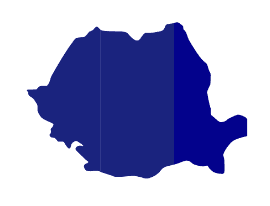
- Average Hourly Rate: $25 – $45
- Talent Pool: Approximately 116,000 IT professionals.
- Demographics: According to the most recent data by umultirank, , about 32% of university graduates in Romania were from STEM disciplines.
- Tech Ecosystem: Romania’s tech industry contributes about 6% to the national GDP. The country is known for its highly skilled IT workforce and competitive costs. Bucharest and Cluj-Napoca are key tech hubs.
- Preferred Technologies: SQL, Java, Python, JavaScript.
- Time Zone: GMT+2.
7. Argentina 
- Average Hourly Rate: $34
- Talent Pool: Around 115,000 software developers.
- Demographics: According to the OECD’s “Education at a Glance 2023” report, about 32% of university graduates in Argentina were from STEM disciplines and the number seems increasing year by year.
- Tech Ecosystem: Argentina’s tech ecosystem is rapidly growing, with Buenos Aires being a significant hub. Argentina’s tech industry contributed approximately 2.4% to the national GDP. The country is also home to several successful startups and receives substantial foreign investment.
- Preferred Technologies: Java, Python, and data-related technologies.
- Time Zone: GMT-3.
8. Mexico 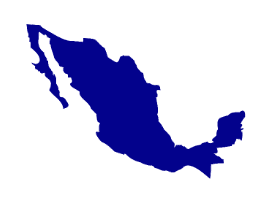
- Average Hourly Rate: $41
- Talent Pool: Mexico has about 225,000 software developers.
- Demographics: Data from Mexico Business News indicates that over 110,000 engineers graduate annually from Mexican universities. This makes engineering graduates account for more than 20% of all university graduates in the country, showcasing Mexico’s robust pipeline of technical talent
- Tech Ecosystem: Mexico’s tech sector contributes around 4.3% to the GDP. It is known for its strong startup ecosystem and proximity to the U.S., which facilitates business operations. Key tech hubs include Mexico City and Guadalajara.
- Preferred Technologies: Java, .NET, mobile development.
- Time Zone: GMT-6 to GMT-8.
9. Vietnam 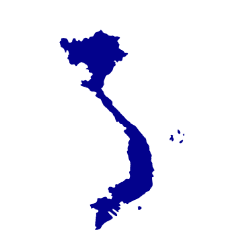
- Average Hourly Rate: $25 – $40
- Talent Pool: Approximately 480,000 software developers.
- Demographics: Vietnam has over 100,000 students graduated in STEM-related disciplines in 2023. This emphasis on STEM education is part of Vietnam’s broader strategy to enhance its technological and economic capabilities.
- Tech Ecosystem: Vietnam’s tech industry is emerging, contributing around 4% to the GDP. The country is known for its growing startup scene and competitive tech talent pool. Ho Chi Minh City and Hanoi are the primary tech hubs
- Preferred Technologies: Java, PHP, mobile development.
- Time Zone: GMT+7.
10. China 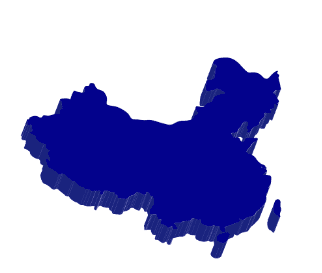
- Average Hourly Rate: $50 – $100
- Talent Pool: China leads with an impressive number of software developers, estimated to be around 4.7 million.
- Demographics: The South China Morning Post reported that a record high of 11.6 million students were expected to graduate from Chinese universities in 2023, with a significant portion of these graduates being from STEM fields due to the increasing focus on digital transformation and technological advancement within the country.
- Tech Ecosystem: China’s tech ecosystem is vast and innovative, accounting for about 7.8% of the national GDP. Major tech hubs include Beijing, Shenzhen, and Shanghai. China leads in AI, 5G, and e-commerce, supported by significant government investment and a large domestic market.
- Preferred Technologies: Python, Java, AI technologies.
- Time Zone: GMT+8.
Comparison Table
Here’s a quick comparison of the important parameters you need to take note of while hiring dedicated developers.
| Country | Average Hourly Rate | Talent Pool | Preferred Technologies | Time Zone |
|---|---|---|---|---|
| India | $20 – $30 | 4 million | Java, JavaScript, Python, PHP, mobile app development | High compatibility, GMT+5:30 |
| Ukraine | $30 – $50 | 200,000+ | Java, Python, PHP, JavaScript | GMT+2 |
| Poland | $40 – $55 | 279,000 | Java, SQL, Python, PHP | GMT+1 |
| Philippines | $20 – $49 | 190,000 | Web development, Java, .NET | GMT+8 |
| Brazil | $30 – $50 | 500,000+ | Java, JavaScript, mobile development | GMT-3 |
| Romania | $25 – $45 | 116,000 | SQL, Java, Python, JavaScript | GMT+2 |
| Argentina | $34 | 115,000 | Java, Python, data technologies | GMT-3 |
| Mexico | $41 | 225,000 | Java, .NET, mobile development | GMT-6 to GMT-8 |
| Vietnam | $25 – $40 | 480,000 | Java, PHP, mobile development | GMT+7 |
| China | $50 – $100 | 4.7 million | Python, Java, AI technologies | GMT+8 |
Challenges and Solutions While Hiring International Talent
When exploring the best countries to hire software developers, it’s crucial to be aware of the potential challenges and how to overcome them. Hiring international talent offers numerous advantages, but it also comes with its own set of hurdles. Here’s a closer look at the common challenges and practical solutions:
- Time Zone Differences: Coordinating across different time zones can lead to communication delays and scheduling conflicts.
Solution: Implement flexible work hours and use collaborative tools to bridge the time gap.
- Language Barriers: Communication can be hindered if there is not a common language or proficiency level.
Solution: Use clear, simple language and provide language learning resources if necessary.
- Legal and Compliance Issues: Navigating various countries’ labour laws, tax regulations, and visa requirements can be complex.
Solution: Partner with legal experts or use global employment services to ensure compliance.
- Security Concerns: Protecting sensitive data and intellectual property can be more difficult with international teams.
Solution: Implement strict security protocols and use secure communication channels.
- Integration and Onboarding: Integrating international hires into existing teams and company culture can take more effort.
Solution: Develop a comprehensive onboarding program and encourage team-building activities.
- Remote Management: Managing performance, providing feedback, and fostering team cohesion can be harder when hiring remote developers, and international teams.
Solution: Utilize project management tools and hold regular virtual meetings.
- Cost Management: As we know the cost of hiring a software developer includes hidden expenses and can be a challenge
Solution: Track expenses carefully and use budgeting tools to manage costs effectively.
By understanding and addressing these challenges, you can successfully hire software developers from top It outsourcing companies that too from the best of the countries and fully leverage their talents. Remember, preparation and proactive management are key to overcoming these hurdles and ensuring a smooth, productive collaboration with your international team.
Conclusion
When choosing the best country to hire software developers, it is essential to consider various parameters, including cost, talent pool size, preferred technologies, and cultural compatibility. By evaluating these factors, you can ensure successful collaboration and high-quality output for your projects.
For businesses looking to hire developers, Softlabs Group ticks all the boxes with over 20 years of experience and a presence in the USA, UK, Sweden, and India. They have completed over 5000 projects for clients in more than 25 countries. Their developers are known for their expertise, professionalism, and ability to deliver high-quality work within deadlines
Softlabs Group specializes in:
- Custom Software Development
- Mobile App Development
- Cloud Computing Solutions
- AI and Machine Learning
- Blockchain Development
- IoT Solutions
By considering these factors and leveraging the expertise of a reliable partner like Softlabs Group, you can enhance your tech capabilities and achieve your business goals. Remember, identifying the best countries to hire software developers is crucial for optimizing costs and accessing top talent.
Hire Developers Now



